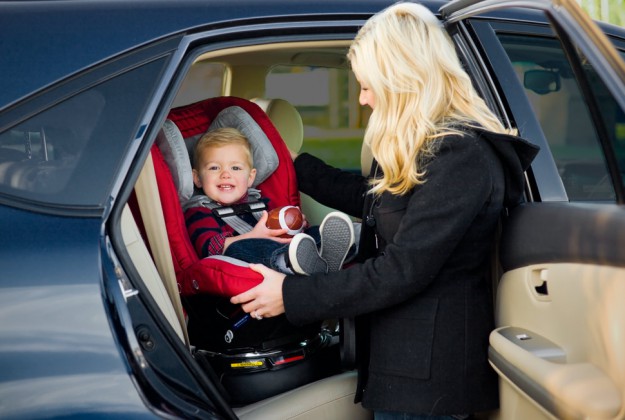You’ll always want your children be seated in a comfortable infant or child car seat when you are travelling in a car. This includes the journey when you come home from the hospital with your baby, so don’t get too late to get one fitted!
In Australia, various child restraint laws were introduced in all the states and territories to reduce the number of effects of serious injuries or deaths in an accident.
In this article, I am going to share ultimate things about your infant and child car restraints to help you make sure your baby is safe when travelling in car.
Important Child Car Restraints, Parents Must Know
1. All the children until the age of seven must be, by law in a child car restraint.
2. The car seat must be appropriate for the child’s age and size.
3. Make sure the car seat is installed correctly, a poorly installed seat can be dangerous.
4. The child should be fastened properly and the harness adjusted properly.
Why Do Children Under 7 Need To Be in a Car Seat?
Well, there are various reasons…
- Children in adult seatbelts are more likely to get injured in a crash compared to the children in a child restraint.
- Seatbelts do not provide enough protection for children as they’re designed for the adults.
- Little children can not be appropriately restrained by the seatbelts alone, their legs are petite to bend at the seat edge and so they can slump, pushing the lap portion of belt up into the abdomen area instead of across the thighs. Moreover, the sash part of the belt across the neck can result in serious injuries in a crash.
- Child restraints are specifically designed considering the size and weight of a child to protect a child’s head and the lower body, having wings on each side of the seat.

How Should You Ensure Your Child Is Safe While Traveling In a Car?
It is crucial to know that we use the car seats to ensure our child’s safety – not just to follow the rules/law. Infa secure car seat has a very significant influence on the Australian child car restraint standards. There are many safety measures that can go beyond law, simply with the aim of keeping your children as safe as possible.
Here are few ways you can make sure your child is as safe as possible:
- Babies are more safe when rare-facing. A child’s head is larger and heavier than the adults in proportion to the rest of their body. This simply means they have more risk of getting injured in an accident when forward-facing. If your baby fits properly in rear-facing seat, try to keep them there only.
- Keep them in the current seat as long as they outgrow it, instead of transiting them when they reach the age requirements by law. All the latest car seats come with the shoulder height markers, which make it easier to figure out when the child has outgrown the car seat.
- Use booster seats with lap-sash seat-belts to secure your baby in a seat which has a built-in harness until they fit then when they move to the booster seat and you can use it where a lap-sash seat-belt is available.
- Do not use damaged or old car seats for the restraints older than 10 years without inspecting their wear and degradation before using them. Damaged restraints with moderate to severe crashes should be disposed of and should not be re-used.
To make sure that your child is properly secured in the car seat, just remember to adjust the shoulder strap according to your child before installing the car seat, make sure the harness straps aren’t twisted and it is tight enough to keep your baby secured.
Hope, this article helps you in guiding the necessary steps you must take for your infant’s security during your travel.





